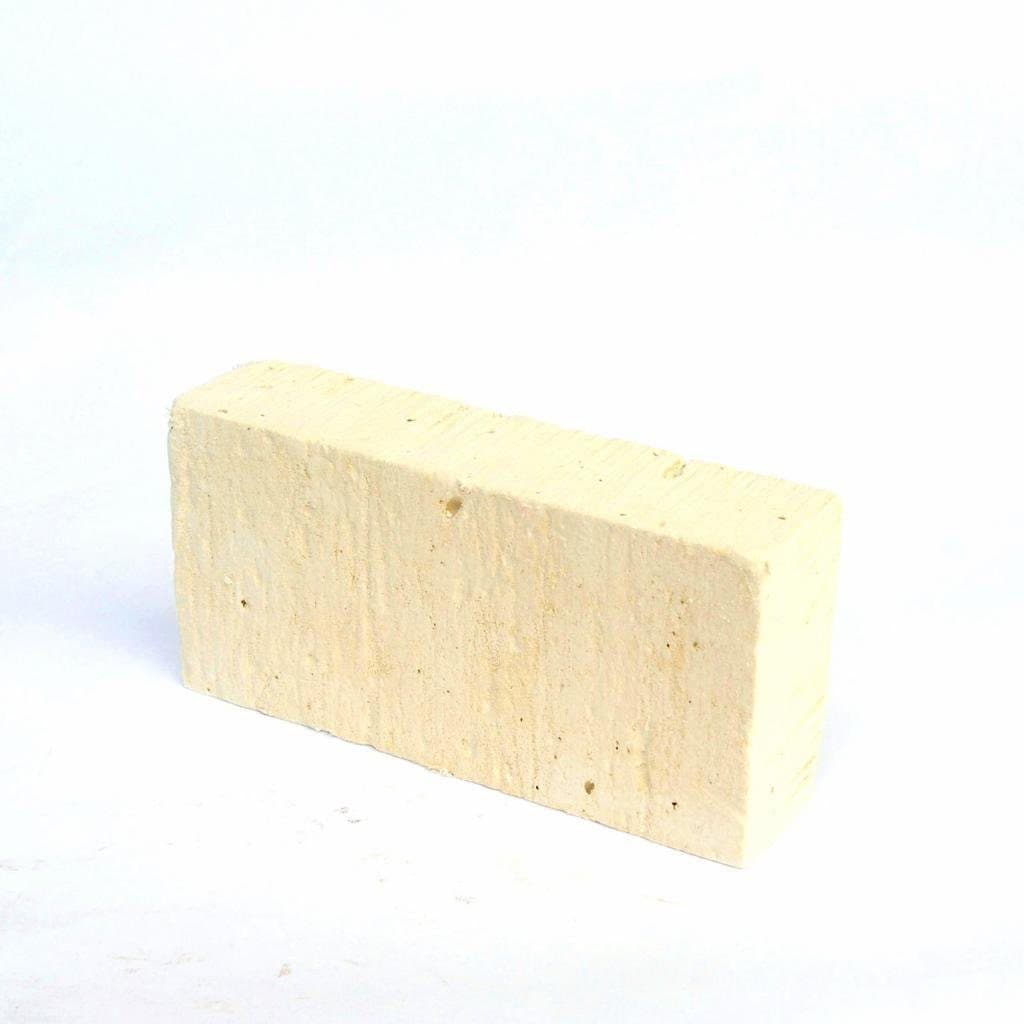
What Kinds of Soldering Surfaces are Used in Jewelry Making?
Soldering surfaces will hold your jewelry work pieces securely and protect your workbench. Learn the Pros and Cons of different heat-resistant materials.
2 Minute Read
Soldering Surfaces: An Overview
You'll find charcoal blocks for sale in different sizes. When used for soldering, they help create a reducing atmosphere that helps cut down on fire scale (heavy oxidation on jewelry metal). They're soft, so you can easily pin your work pieces to them. They're also expensive, messy, and need to be quenched in water after each use or they'll burn up. Also, they have a tendency to crack if not wrapped with wire.
Kiln brick is porous, soft, and inexpensive. You can easily cut it into different shapes to hold objects.
Ceramics are good but act as heat sinks. Some smell bad when first used, so cure them in a kiln before use.
You can also use the old standby: a round cake pan filled with pumice. A soldering frame and tripod will allow you to heat your piece from the top or from underneath.
Safety Tips
Kiln brick and charcoal blocks aren't very big. You'll need something heat-resistant to put under your soldering block, otherwise you''ll keep setting your workbench on fire. Ceramic tile or a couple of pieces of sheet metal should do the trick. Make sure they're big enough to provide a safety margin, in case your torch flame should stray from the soldering block.
Don''t forget to keep a fire extinguisher handy.
Please, don't solder on any asbestos product, under any circumstances.
Heat-Resistant Surfaces
Sheet Metal
A piece of steel sheet metal will make a great covering for your workbench or table. Make sure to purchase a grooved sheet, to keep your tools from rolling off. You can purchase these online or from your local hardware store.
Ceramic Floor Tiles
Another excellent option for protecting your workbench, ceramic floor tiles can also be purchased online or from any hardware store. Make sure to buy at least two to cover the top of your workbench.
Soldering Surfaces: Boards
Ceramic Soldering Boards
Although small, ceramic soldering boards can withstand intense torch work. Make sure the surface has a honeycomb texture, so you can stick U-pins and T-pins into it. U-pins and T-pins will keep your item from rolling while you're soldering.
Magnesia Block
Very popular among jewelers, a magnesia block can withstand up to 2,000º F (1,093º C). It's soft and porous, so you can easily stick pins into it to keep items from moving.
Charcoal Block
A bit more fragile than ceramic and magnesia, a charcoal block must be bound around the perimeter with wire to keep it from cracking. You have to quench it after each torching. Many jewelers also find the possible cracking troublesome. However, charcoal acts as a great heat sink and cuts down on oxidation. It's soft and can accommodate pins as well.
Recommended Jewelry Soldering Surfaces
Buy List
Budget
Budget
Budget
Budget
Related Articles
Guest Designers Online Faceting Designs & Diagrams: North Star
Scholar: Faceting Design Diagram
Candy Spin: Faceting Design Diagram
Selling Gems to Jewelers: Basic Rules
Latest Articles
800 Years of Mogok: A Celebration in Tenuous Times
What is the Average Gemstone Faceting Yield?
Pyroxmangite Value, Price, and Jewelry Information
How to Identify Emerald Simulants and Synthetics
Never Stop Learning
When you join the IGS community, you get trusted diamond & gemstone information when you need it.
